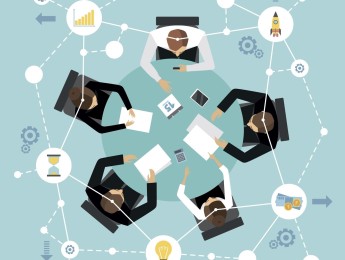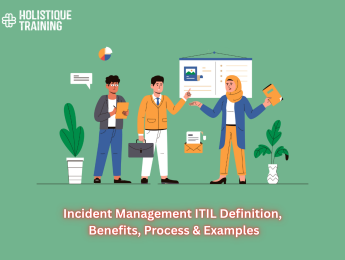- Table of Contents
- What Is Customer Satisfaction and Why Is It Important?
- How Can Surveys Help Measure Customer Satisfaction?
- Why Should Businesses Use Customer Feedback Forms?
- How Do Customer Satisfaction Scores (CSAT) Work?
- What Role Does Net Promoter Score (NPS) Play in Measuring Loyalty?
- What Are the Advanced Tools for Customer Satisfaction Analysis?
Introduction
Understanding customer satisfaction is crucial for businesses aiming to succeed in today's competitive market. It reflects how well a company's products or services meet or exceed customer expectations. High customer satisfaction enhances customer loyalty, encourages repeat business, and fosters positive word-of-mouth, providing a competitive edge. This article explores the importance of customer satisfaction and how it can be measured effectively, using tools such as surveys, to improve business outcomes.
What Is Customer Satisfaction and Why Is It Important?
Customer satisfaction refers to the measure of how products or services provided by a company meet or surpass customer expectations. It is a fundamental metric used by businesses to gauge the customer's perception of their experience with the company's offerings. This metric is crucial because it provides insights into various aspects of the business, including product quality, customer service, and overall customer experience.
Importance of Customer Satisfaction:
- Customer Retention: Satisfied customers are more likely to be loyal and continue using a company’s products or services. High customer satisfaction levels often lead to repeat business and, consequently, a stable revenue stream for the company.
- Word-of-Mouth Marketing: Happy customers are more likely to recommend a company to others, which can be a powerful form of advertisement. Positive word-of-mouth can help a business grow its customer base and enhance its reputation without significant marketing expenses.
- Competitive Advantage: In competitive markets, customer satisfaction can be a key differentiator. Businesses that deliver excellent customer experiences can distinguish themselves from competitors, potentially commanding a premium for their products or services.
- Reduced Churn: By understanding and addressing the needs and problems of customers, companies can reduce the rate at which customers stop using their services (customer churn). Lower churn rates can contribute to business stability and improved profitability.
- Valuable Feedback: Measuring customer satisfaction provides valuable feedback that companies can use to improve their products, services, and overall customer experience. This feedback loop can drive continuous improvement and innovation.
- Financial Performance: Numerous studies have shown a direct correlation between customer satisfaction and the financial performance of a company. Higher customer satisfaction often translates to better sales, higher profit margins, and increased shareholder value.
Customer satisfaction is not just about retaining customers or making them happy in the short term. It’s a strategic tool that impacts all facets of a business, driving it to adapt and thrive in a constantly changing marketplace. Ensuring high customer satisfaction is fundamental to sustaining a successful business model.
How Can Surveys Help Measure Customer Satisfaction?
Surveys are one of the most commonly used tools for measuring customer satisfaction due to their flexibility, scalability, and the depth of insights they can provide. Here’s how surveys can help businesses effectively gauge customer satisfaction:
Broad Reach and Scalability:
- Surveys can be distributed to a large number of customers simultaneously, making it possible to collect extensive data quickly and efficiently. This broad reach allows businesses to gather feedback from a wide spectrum of customers, including those in different geographical locations.
Customizable Questions:
- Surveys can be tailored with specific questions that probe into various aspects of the customer experience, from the quality of customer service to the usability of products or the effectiveness of a company’s return policy. This customization makes it possible to gather precise information that is directly relevant to the business’s unique needs.
Quantitative and Qualitative Data:
- Surveys can collect quantitative data (e.g., ratings on a scale of 1-10) which can be easily analyzed to track performance over time. They can also include open-ended questions that collect qualitative feedback, offering deeper insight into the customer's feelings and thoughts about their experiences.
Benchmarking Performance:
- By regularly deploying surveys, companies can track changes in customer satisfaction over time. This tracking helps in benchmarking against previous performance or industry standards, allowing businesses to see where they stand and identify areas for improvement.
Identifying Patterns and Trends:
- The data collected from surveys can reveal patterns and trends regarding customer preferences and expectations. Analyzing this data can help businesses anticipate market shifts and adapt their strategies accordingly.
Cost-Effectiveness:
- With the advent of digital tools and platforms, online surveys are particularly cost-effective. They can be created, distributed, and analyzed without a significant financial investment, making them accessible for businesses of all sizes.
Actionable Insights:
- The feedback from surveys can lead to actionable insights. For example, if customers consistently indicate dissatisfaction with a particular aspect of service, the company can focus its efforts on improving that area. This targeted approach can lead to more effective use of resources and quicker improvements in customer satisfaction.
Enhancing Customer Relationships:
- Surveys show customers that their opinions are valued. This can enhance customer relationships and loyalty, as customers are more likely to feel a connection with a business that seeks and listens to their feedback.
To maximize the effectiveness of surveys in measuring customer satisfaction, businesses should ensure that surveys are easy to complete, respect the customer’s time, and include a mix of question types that encourage honest and thoughtful responses. Regularly updating the survey questions to reflect current issues and priorities also helps maintain relevance and engagement from respondents.
Why Should Businesses Use Customer Feedback Forms?
Customer feedback forms are a vital tool for businesses aiming to understand and enhance their customer interactions. Here are several reasons why implementing customer feedback forms can be beneficial:
Easy Accessibility:
- Customer feedback forms can be made readily accessible in various formats, including digital forms on websites, in apps, or physical forms in stores. This accessibility makes it convenient for customers to express their opinions and experiences immediately and at any point in their interaction with the business.
Real-Time Feedback:
- Feedback forms allow customers to communicate their thoughts and feelings about a service or product in real-time. This immediacy can capture the customer's sentiments more accurately as the experience is fresh in their mind, providing more genuine feedback.
Structured Data Collection:
- Feedback forms help in collecting data in a structured format, making it easier to analyze and interpret. Businesses can standardize the questions they ask, which helps in comparing and measuring changes and trends over time.
Improving Products and Services:
- The direct feedback obtained from customers is invaluable for identifying strengths and weaknesses in products and services. This information can drive product development and service improvements tailored to meet customer needs more effectively.
Customer Engagement and Loyalty:
- By soliciting feedback, businesses show customers that they value their input and are committed to improvement. This engagement can enhance customer satisfaction, foster loyalty, and increase the likelihood of customers returning and recommending the business to others.
Informed Decision Making:
- Feedback forms provide quantitative and qualitative data that can inform business decisions. Understanding customer needs and preferences helps management make informed choices about where to allocate resources and how to prioritize business initiatives.
Identifying Trends and Patterns:
- Regularly analyzing feedback from customers helps businesses identify patterns and trends in customer behavior and market conditions. This insight can be crucial for adapting marketing strategies and product offerings to better suit the changing demands of the market.
Cost-Effectiveness:
- Implementing digital customer feedback forms is generally low-cost compared to other forms of customer research, such as focus groups or face-to-face interviews. The cost-effectiveness combined with the broad reach makes feedback forms an excellent option for continuous feedback collection.
Resolving Issues Promptly:
- Feedback forms can help businesses quickly identify and address specific customer issues before they escalate. Prompt resolution of problems not only improves the individual customer's experience but can also prevent further negative impacts on other customers.
Table 1: Benefits of Using Customer Feedback Forms in Business Operations
Benefit | Description |
Easy Accessibility | Feedback forms are easily accessible in various formats (digital on websites and apps, physical in stores), making it convenient for customers to express their opinions at any interaction point. |
Real-Time Feedback | Forms allow customers to provide feedback in real-time, capturing their sentiments accurately when their experiences are fresh, leading to more genuine feedback. |
Structured Data Collection | Feedback forms collect data in a structured format, simplifying analysis and interpretation. Businesses can standardize questions to consistently measure changes and trends. |
Improving Products and Services | Direct feedback from customers is invaluable for identifying strengths and weaknesses in products and services, driving targeted improvements. |
Customer Engagement and Loyalty | By soliciting feedback, businesses show customers that their input is valued, enhancing customer satisfaction, fostering loyalty, and potentially increasing customer retention and recommendations. |
Informed Decision Making | The quantitative and qualitative data gathered from feedback forms help in making informed decisions regarding resource allocation and business initiatives, tailored to customer needs and preferences. |
Identifying Trends and Patterns | Regular analysis of feedback helps identify trends in customer behavior and market conditions, crucial for adapting marketing strategies and product offerings. |
Cost-Effectiveness | Digital feedback forms are generally low-cost compared to other research methods like focus groups or interviews, making them a cost-effective option for continuous feedback collection. |
Resolving Issues Promptly | Feedback forms enable businesses to quickly identify and address specific issues before they escalate, improving customer experience and preventing further negative impacts. |
Overall, customer feedback forms are an essential element of a proactive customer relationship management strategy. They provide crucial insights that help businesses evolve and align more closely with their customers' expectations and needs.
How Do Customer Satisfaction Scores (CSAT) Work?
Customer Satisfaction Scores (CSAT) are a direct and straightforward metric used by businesses to gauge how satisfied customers are with their products, services, or specific interactions. Here’s how CSAT scores typically work:
Defining the Metric:
- CSAT is usually measured by asking customers to rate their satisfaction with an aspect of the service or product on a numerical scale. Commonly, the scale ranges from 1 (very unsatisfied) to 5 (very satisfied), although some businesses may use different scales, such as 1 to 10.
Survey Implementation:
- CSAT questions can be included in post-interaction surveys, which might be sent after a customer purchases a product, uses a service, or interacts with customer support. These surveys are often distributed via email, though they can also be delivered through other channels like SMS, websites, or mobile apps.
Question Design:
- The typical CSAT question is straightforward: "How satisfied were you with [specific experience or overall service]?" This simplicity helps ensure that responses are intuitive and reflect the customer's immediate feelings about their experience.
Calculating the Score:
- CSAT scores are calculated by taking the average of all customer responses. To make the score more interpretable, it is often converted into a percentage. For example, if the scale is from 1 to 5, responses might be considered positive if they are 4 or 5. The percentage of customers responding with these top-tier scores reflects the CSAT score.
Interpreting Results:
- A higher CSAT score indicates greater customer satisfaction. Businesses typically aim for high scores, but what constitutes a "good" score can vary by industry, region, or customer expectations. Benchmarks can provide context for interpreting these scores effectively.
Actionable Insights:
- While a high CSAT score is desirable, the real value comes from drilling down into the data to understand the reasons behind customer dissatisfaction or satisfaction. Additional questions in the survey can help uncover specific issues or confirm that certain improvements or features are well-received.
Feedback Loop:
- The insights gained from CSAT scores should feed back into the business to inform improvements. Whether adjusting customer service protocols, enhancing product features, or fixing operational inefficiencies, these adjustments aim to boost future CSAT scores and, by extension, customer satisfaction.
Challenges and Considerations:
- CSAT is often praised for its simplicity and directness, but it also faces criticism for being too narrow, as it generally captures sentiment at a single touchpoint rather than the entire customer journey. Therefore, it's commonly used in conjunction with other metrics like Net Promoter Score (NPS) and Customer Effort Score (CES) to get a fuller picture of customer experience.
CSAT is a powerful tool for measuring satisfaction at specific interaction points and can help businesses quickly gauge and respond to customer feedback, driving improvements that enhance the overall customer experience.
What Role Does Net Promoter Score (NPS) Play in Measuring Loyalty?
Net Promoter Score (NPS) is a widely used metric in the business world for assessing customer loyalty and predicting business growth potential. It differs from customer satisfaction scores (CSAT) by focusing not just on satisfaction, but on customers' willingness to recommend a company’s products or services to others. Here’s how NPS works and the role it plays in measuring customer loyalty:
Survey Methodology:
- NPS is determined based on responses to a single question: “On a scale of 0 to 10, how likely are you to recommend our company/product/service to a friend or colleague?” Based on their ratings, respondents are categorized as Promoters (9-10), Passives (7-8), or Detractors (0-6).
Calculation of NPS:
- The Net Promoter Score is calculated by subtracting the percentage of Detractors from the percentage of Promoters. The result is a score that can range from -100 (if every customer is a Detractor) to +100 (if every customer is a Promoter). A positive score is generally favorable, and a score above 50 is considered excellent.
Measuring Customer Loyalty:
- NPS is particularly useful for measuring loyalty because it reflects the customer’s deep commitment to a brand—as evidenced by their willingness to recommend it to others. This endorsement goes beyond mere satisfaction with a product or service; it indicates that the customer believes in the quality and value of the offering enough to put their own reputation on the line by recommending it.
Predicting Business Growth:
- Since loyal customers are more likely to make repeat purchases and bring in new customers through recommendations, a high NPS is often correlated with stronger business growth. Many studies have shown that companies with high NPS scores tend to outperform their competitors in terms of revenue and growth.
Strategic Decision-Making:
- NPS helps companies identify the factors driving customer loyalty and, conversely, the areas that may be causing dissatisfaction. This insight is crucial for making strategic decisions that enhance the overall customer experience and, by extension, loyalty.
Benchmarking Performance:
- NPS provides a clear and concise metric that companies can benchmark against industry standards or track over time. This benchmarking can be crucial for understanding a company's position in the competitive landscape and for setting targets for improvement.
Global Applicability:
- Due to its simplicity and focus on fundamental aspects of customer behavior, NPS is used across various industries and cultural contexts, making it a versatile tool for global companies.
Challenges and Limitations:
- While NPS is a valuable indicator of loyalty, it is not without its challenges. It doesn’t capture the nuances of customer sentiment or the reasons behind the scores, which can be crucial for making detailed improvements. Moreover, it can be influenced by cultural factors that affect how people respond to surveys, potentially skewing the results.
NPS plays a crucial role in measuring and understanding customer loyalty, which is fundamental for long-term business success. When used effectively in conjunction with other metrics and detailed customer feedback, NPS can guide significant strategic decisions that boost customer loyalty and drive business growth.
What Are the Advanced Tools for Customer Satisfaction Analysis?
In today’s data-driven business environment, leveraging advanced tools for customer satisfaction analysis is crucial for understanding customer needs and enhancing their experiences. These tools not only capture data but also provide insights through sophisticated analysis techniques. Here are some of the advanced tools used in customer satisfaction analysis:
Customer Relationship Management (CRM) Systems:
- CRM systems are comprehensive tools that collect and store a wide range of customer data across multiple touchpoints. They provide detailed customer profiles that help businesses track customer interactions, purchase history, and behavior patterns. Advanced CRM systems can analyze this data to identify trends, predict customer needs, and personalize communications.
Text Analytics and Sentiment Analysis Software:
- These tools analyze textual feedback from surveys, social media, customer support interactions, and online reviews. They use natural language processing (NLP) to identify and extract subjective information, helping businesses understand the sentiment behind customer comments, whether positive, negative, or neutral.
Business Intelligence (BI) Platforms:
- BI platforms integrate data from various sources like sales, customer service, and online behavior to provide a holistic view of the customer experience. These platforms use advanced analytics, including predictive analytics, to uncover patterns and trends that can help predict customer behaviors and satisfaction levels.
Voice of the Customer (VoC) Programs:
- VoC programs collect and analyze customer feedback across various channels to provide a comprehensive view of the customer experience. Advanced VoC tools integrate with other systems like CRM and BI tools, enabling real-time feedback analysis and more responsive customer service.
Customer Feedback Management Software:
- This software centralizes feedback from multiple channels and automates the collection and analysis process. It often features tools for creating surveys, distributing them across platforms, and analyzing responses to gauge customer satisfaction and identify improvement areas.
Artificial Intelligence (AI) and Machine Learning (ML) Models:
- AI and ML models are increasingly being used to analyze large datasets and provide insights that human analysts might miss. These models can predict customer churn, segment customers based on satisfaction levels, and recommend actions to enhance the customer experience.
Data Visualization Tools:
- These tools help businesses visualize complex datasets in an understandable and actionable format. Data visualization is crucial for communicating findings effectively to stakeholders and for identifying trends in customer satisfaction quickly.
Social Media Analytics Tools:
- These tools monitor mentions, comments, and reviews on social media platforms to gauge public sentiment and respond to customer feedback promptly. Advanced tools provide demographic insights, peak activity times, sentiment analysis, and influencer engagement rates.
Customer Journey Mapping Tools:
- These tools help businesses visualize the entire customer journey, from initial contact through various touchpoints to the final transaction and post-purchase interactions. By understanding the customer journey, businesses can identify key moments that impact customer satisfaction and optimize these interactions.
Table 2: Advanced tools for customer satisfaction analysis
Tool Category | Description |
Customer Relationship Management (CRM) Systems | Comprehensive systems that collect and store data across multiple touchpoints, providing detailed customer profiles to track interactions, purchase history, and behavior patterns. They analyze this data to identify trends and personalize communications. |
Text Analytics and Sentiment Analysis Software | Tools that analyze textual feedback from various sources using natural language processing (NLP) to extract subjective information and understand the sentiment behind customer comments. |
Business Intelligence (BI) Platforms | Platforms that integrate data from sales, customer service, and online behavior to provide a holistic view of customer experiences, using advanced analytics to predict behaviors and satisfaction levels. |
Voice of the Customer (VoC) Programs | Programs that collect and analyze feedback across channels, integrating with systems like CRM and BI for real-time analysis and responsive customer service. |
Customer Feedback Management Software | Software that centralizes feedback from multiple channels, automating collection and analysis. It often includes tools for creating and distributing surveys and analyzing responses. |
Artificial Intelligence (AI) and Machine Learning (ML) Models | Models used to analyze large datasets and provide insights, predict customer churn, segment customers, and recommend actions to enhance experiences. |
Data Visualization Tools | Tools that help visualize complex datasets in an understandable format, crucial for communicating findings to stakeholders and identifying trends quickly. |
Social Media Analytics Tools | Tools that monitor social media for mentions, comments, and reviews, providing demographic insights, sentiment analysis, and engagement rates. |
Customer Journey Mapping Tools | Tools that help visualize the entire customer journey from initial contact through post-purchase interactions, identifying key moments that impact satisfaction. |
These advanced tools, often integrated, provide businesses with the ability to deeply understand customer satisfaction on multiple levels. By effectively leveraging these tools, companies can enhance their customer satisfaction strategies, leading to improved customer loyalty, increased retention, and ultimately, greater business success.
Conclusion
In conclusion, customer satisfaction is a pivotal element for any business seeking long-term success and competitive advantage. By effectively measuring and responding to customer feedback through tools like surveys, businesses can gain valuable insights that drive improvements in product quality, customer service, and overall experience. Ultimately, prioritizing customer satisfaction not only fosters loyalty and retention but also fuels growth and profitability in an increasingly customer-centric marketplace.

























